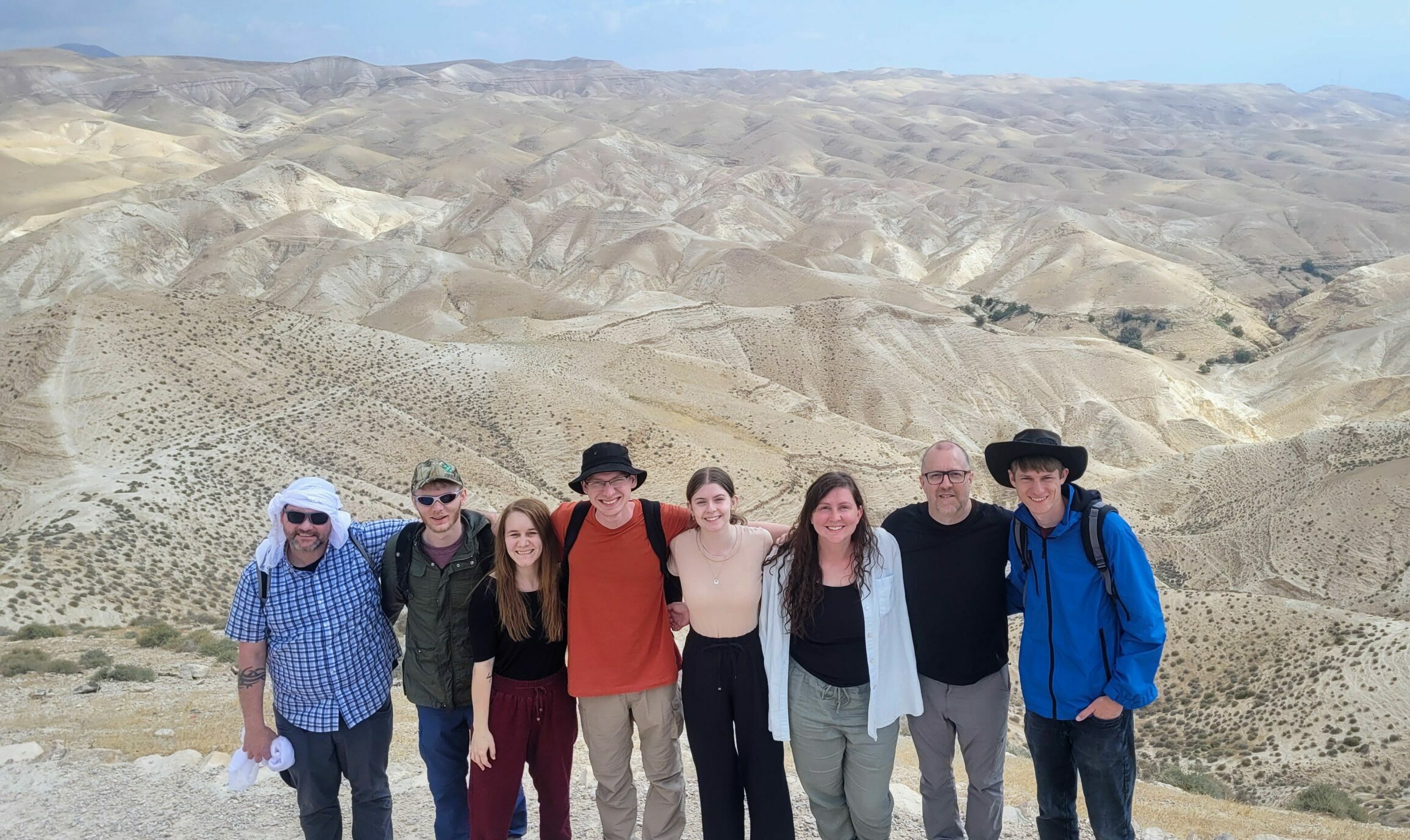
2023 Israel Study Trip
by Jerry Pauls, Biblical Studies Program Director
On May 16, nine Columbia students and one faculty arrived in Ben Gurion International Airport in Tel Aviv. Each arrived tired from their lengthy flights but brimming with anticipation and excitement about the opportunity to move their study of the Bible out of the too-familiar CBC classrooms to the incredible lands of the Bible itself.
The group spent three weeks at Jerusalem University College living just outside the staggering 16th century walls of Old City Jerusalem, making almost daily trips into the Old City to explore the wonders of the Jewish, Muslim, Christian, and Armenian quarters of the city. While there, students completed a three-week short-term study on the Historical and Geographical Settings of the Bible, earning valuable credits for their degrees. The course is built on multiple field studies throughout the land, each focused on helping students to experience the geography, climate, agriculture, and historical sites. Students travelled the land daily, armed with maps, notebooks, and Bible.
For Jerry Pauls, Old Testament instructor and Biblical Studies Program Director, it was his fifth time leading a group of Columbia students to the Holy Land but the experience never gets old. Walking alongside students as they experience the land for the first time and see new depth and beauty in the biblical stories is a reward all on its own. In the words of Paige Privensal, a 3rd year Columbia student, “Going to Israel to study the generations worth of history it holds for three weeks was the most profound, heart-warming, and life changing experience I have ever had.”
Columbia’s Biblical Studies Program has been bringing students to Israel since 2007. Covid interrupted the schedule, but otherwise the trip is offered every two years, with the next trip planned for May 2025. While the costs of this trip have risen substantially in recent years and can be prohibitive for many students, the experience is invaluable for those who are able to participate. Here’s how Janice Simpson, a fourth-year Columbia student, summarized her experience. “One thing that I have repeated each time I talk about it is that ‘It is worth it’ —the stress of travel, the financial cost, the physical exhaustion, and the overwhelming amount of information pales in comparison to the impact it produces via the experience of walking in the steps of the prophets and existing in the land of Jesus.” A highlight this trip, one of many this year, was standing atop the Herodion, King Herod’s stunning palace fortress carved deep into the top of a hill less than ten miles south of Jerusalem. Herodion is one of Herod’s many breathtaking architectural marvels throughout the land of Israel, each reflecting his fixation upon his own legacy, consumed as he was with being revered and never forgotten. As the group stood atop the very fortress where King Herod was buried with a great procession in 4 BC, they turned to look west, where less than three miles away they could see the small, insignificant town of Bethlehem. There in 4 BC, the very year of Herod’s death, another king had been born, a king who would have no palaces and no fortresses; a king who would build a different kind of kingdom and who would be revered and remembered for something far greater and far more impressive than anything Herod could imagine. In that moment, standing atop the fortress, the irony of these two kings and their kingdoms was palpable. We proceeded to walk down Herod’s hilltop fortress and boarded the bus for Bethlehem.





